It’s a monster double-bill of B horror this week at the Thursday Horror Picture Show with Man Made Monster (1941) and Night Monster (1942) sharing the screen. Are they classics? Well, yes, of a kind—satisfying and slickly crafted, unpretentious little thrillers, made without any thought that people would be watching them 70 years later. That last is probably exactly why the movies retain their charms. Man Made Monster is the picture that launched Chaney Jr. as a horror star—and the film that served as the template for the assembly-line horrors that marked Universal’s 1940s releases. Night Monster is somewhat more ambitious—even if it was shot in 13 days—but usually gets a bad rap for wasting Bela Lugosi in a thankless role.

This particular type of movie was the result of three years of disastrous attempts of “New Universal” to distance itself from Universal as it had been under the Laemmle family. In 1936, the perpetually strapped Laemmles borrowed money from Standard Capital with the studio as the potential prize. One box-office flop in particular, Sutter’s Gold, helped ensure the loss of the studio to Standard Capital, who happily took over and renamed themselves (semi-officially) the “New Universal”—this is where the lucite globe with its fanfare and twirling stars replaced the old “airplane circling the globe” logo. The first thing to go were horror pictures. This dovetailed with the unofficial moratorium on horror that had come about from pressure groups appalled at the “excesses” of the 1930s horror pictures—and it suited the new head of production, Charles Rogers, just fine because he hated horror movies.
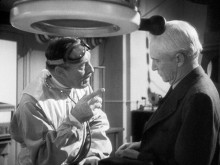
Well, a couple years of no horror movies turned out to be disastrous, and when a re-issue of Dracula (1931) and Frankenstein (1931) proved immensely successful with audiences starved for horror, New Universal decided to revive the genre with Son of Frankenstein (1939)—a lengthy, expensive production that, despite being a bit on the dull side, proved a big hit. But studio execs considered that it might be possible to make even bigger profits with more streamlined—assembly-line—horrors, especially since they believed the audiences for this sort of thing were none too choosy. Economical movies like Black Friday (1940) and The Mummy’s Hand (1940) proved them right, but the approach really kicked in with Man Made Monster, which is frankly a terrific little movie.
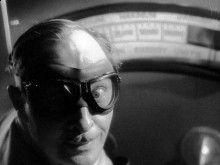
Every aspect of Man Made Monster is perfect for what it sets out to be. The film looks and feels solid. The photography is moody and atmospheric. Hans J. Salter’s musical score—most of which would appear again in other movies if it hadn’t already—gave the film a tremendous boost. The characters are all sketched in with remarkable precision, even though there’s not much time for characterization in a 59-minute movie. Yet—partly due to shewd casting—they all seem real, or at least as real as they need to be. The film milks Chaney’s naturally sympathetic “big lug without much brains” persona very effectively, and wisely gives Lionel Atwill free rein to make his mad doctor as mad as they come.
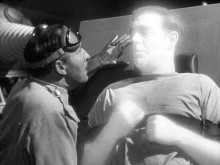
The story is straighforward. Chaney is Dan McCormick, a carnival performer known as “Dynamo Dan, the Electrical Man,” who mystifyingly survives a bus accident where everyone else is electrocuted. This arouses the inerest of kindly Dr. Lawrence (we know he’s kindly because he’s played by Samuel S. Hinds), who wants to study why Dan seems to be immune to electricity. Unfortunately, Lawrence has a certifiably insane assistant, Dr. Rigas (we know he’s insane because he’s played by Lionel Atwill). Rigas has it in mind to use Dan to create an electrical man—“the worker of the future,” whose only need or desire is electricity. Never mind that he’s also going to fry anything or anyone he touches. Naturally, he succeeds, which just as naturally leads to tragedy of the horrific kind.
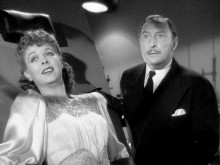
The film is a treasure trove of genre conventions—sympathetic monster, snappy reporter hero (Frank Albertson), surprisingly intelligent lady in distress (Anne Nagel, who could make the dumbest line sound pretty smart), and no less than three mad rants for Dr. Rigas (“Mad? Of course, I’m mad!”). It also uses what are now beloved clichés of genre stupidity—it’s just not wise to find yourself alone with a madman and tactlessly point out that he’s nuts. And it all works beautifully—even those mysterious insert shots of electrical machinery from Frankenstein that crop up whenever electrical machinery is present (never mind that the backgrounds give them away every time).
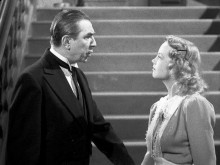
More ambitious, but just as economical, is Ford Beebe’s Night Monster (1942), which not only uses the sets from The Wolf Man (1941), but also pilfers the Wolf Man’s feet for its nocturnal monster. It is, in any case, quite the best movie Beebe ever made. In fact, it’s hard to understand why Beebe—a specialist in serials and cowboy movies—was chosen to not only direct, but to produce the film. Yet, it would be hard to fault what he accomplishes. Indeed, the results supposedly pleased no less a figure than Alfred Hitchcock, who screened the film to assess the performance of Janet Shaw, who he was considering for Shadow of a Doubt (1943). The story has it that Hitch completely enjoyed the film and was amazed by its 13-day shooting schedule. In any case, he did cast Shaw in his film.
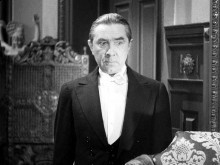
The film is delightfully over-the-top. It’s only a minute old when we find Fay Helm raving that the whole house “reeks” of blood—“The air is charged with death and hatred and something that’s unclean!” Well, it’s that kind of movie, and anyway, she’s not wrong—she’s just in blood-and-thunder mode and that suits the film. The story is an old-dark-house affair that finds the doctors who treated the crippled Kurt Ingston (Ralph Morgan) being killed off one by one during an ill-advised visit to their old patient. Obviously, the completely paralyzed Ingston can’t be doing it, but who else would want these men dead? And what is it that prowls the night leaving pools of blood and gigantic footprints? Well, that’s the mystery of the film—and it’s pretty darn atmospheric about it.
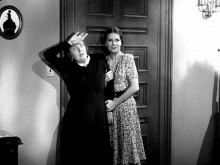
Where the film errs with horror fans lies in the casting. It stars Bela Lugosi and Lionel Atwill—in fact, it’s the only Universal horror other than Dracula where Lugosi received top billing—and yet it gives neither one much to do. Atwill has very little screen time as the first of the doctors to be murdered. At least, Lugosi gets a fair amount of screen time as the butler—and a few choice lines—but he really doesn’t do anything other than stand around and be Lugosi. That might matter less if it weren’t for the fact that there’s the smaller—in terms of screen time—but juicier role of Agor Singh, an Eastern mystic, which is given to Nils Asther. Nothing against Asther, but Lugosi would have made the role into an indelible creation and it’s hard to watch the film without being aware of that. But if you can get past this, Night Monster is one of Universal’s best 1940s horror pictures.



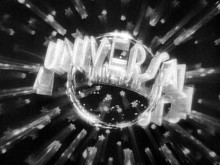
We had a nice turnout tonight and I was delighted to finally get to meet Dionysis, who thankfully introduced himself rather than arriving in a toga, bedecked with grapes and sporting goat leggings. Though come to think of it that woulda been pretty dramatic.
Thanks Ken, I enjoyed meeting you as well and found the movies quite entertaining. I thought about them as I drove home. It’s impressive that a coherent film, that moved along so briskly, could be done in 59 minutes (Man Made Monster). I liked Night Monster maybe a little better. It seems to me that while Bela Lugosi was a rather secondary figure, he got a lot more screen time than I thought he would. Compared to his sad turn in The Black Sleep (I actually watched it on IMDB after you had mentioned they had it in full), he was in good form.
And because I finally made it to a Thursday night horror film showing, I had an strong compulsion to fix myself some Welsh Rarebit and celebrate.
And because I finally made it to a Thursday night horror film showing, I had an strong compulsion to fix myself some Welsh Rarebit and celebrate.
Samuel S. Hinds would approve.